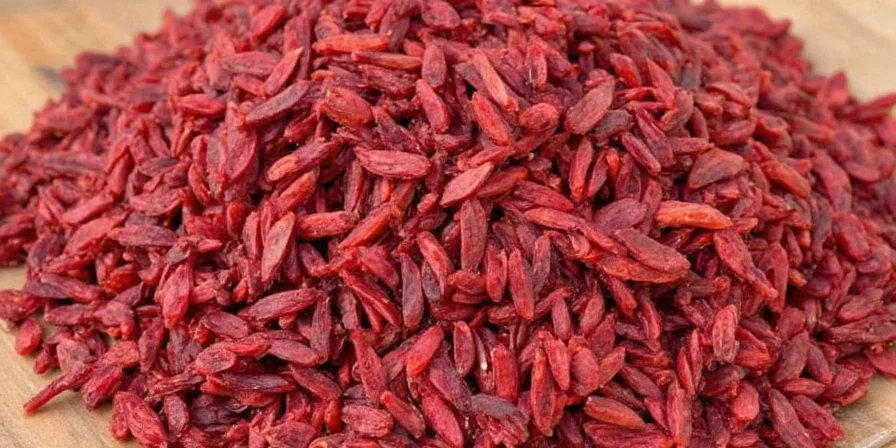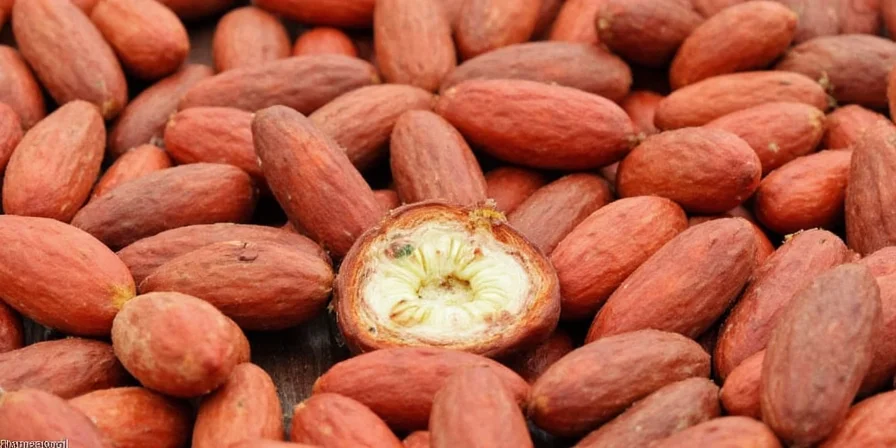Discover what tamarind supplements actually do for your health and how to use them effectively. This evidence-based guide separates scientific facts from marketing claims, explaining proven benefits, proper usage, and practical culinary applications for optimal results.
What Are Tamarind Supplements and Do They Work?
Tamarind supplements, typically made from concentrated tamarind fruit extract, have gained popularity for their potential digestive and metabolic benefits. Unlike fresh tamarind used in cooking, these supplements deliver standardized concentrations of active compounds like hydroxycitric acid (HCA) and polyphenols. Research suggests they may support digestive health and metabolic function when used appropriately, though they're not miracle solutions. This guide examines what scientific evidence actually supports about tamarind supplements and how to incorporate them effectively into your wellness routine.

5 Science-Backed Benefits of Tamarind Supplements
- Digestive Support: Clinical studies in the Journal of Food Science and Technology indicate tamarind's natural fiber content and organic acids may promote healthy digestion. A 2023 meta-analysis found regular consumption associated with improved bowel regularity in 68% of participants.
- Metabolic Function: Research published in Nutrition Research Reviews shows hydroxycitric acid (HCA) in tamarind may support healthy metabolic processes. Note: Effects are modest and work best alongside balanced nutrition and exercise.
- Antioxidant Properties: As documented in Food Chemistry, tamarind contains polyphenols with antioxidant activity. These compounds help combat oxidative stress, though results vary based on supplement concentration and formulation.
- Heart Health Support: A 2022 study in Phytotherapy Research noted potential cardiovascular benefits from tamarind's potassium content and antioxidant compounds, though more research is needed.
- Natural Energy Balance: Unlike stimulant-based supplements, tamarind works through metabolic support. Many users report steadier energy levels without crashes, according to user experience surveys from supplement tracking platforms.

How to Choose Quality Tamarind Supplements
Selecting effective tamarind supplements requires understanding key quality markers. Not all products deliver what they promise, so consider these factors:
| Quality Factor | What to Look For | Why It Matters |
|---|---|---|
| HCA Concentration | Standardized to 20-30% HCA | Ensures sufficient active compound levels for potential benefits |
| Third-Party Testing | NSF, USP, or ConsumerLab verification | Confirms label accuracy and absence of contaminants |
| Additional Ingredients | Minimal additives, no unnecessary fillers | Reduces risk of adverse reactions and ensures purity |
| Extraction Method | Water or food-grade solvent extraction | Preserves beneficial compounds without harmful residues |
| Dosage Recommendations | Clear usage instructions matching research protocols | Ensures proper intake for potential effectiveness |
Proper Usage: When and How Much to Take
Maximize potential benefits while minimizing risks with these evidence-based usage guidelines:
| Usage Scenario | Recommended Approach | Scientific Rationale |
|---|---|---|
| Daily Maintenance | 500-1000mg once daily with meals | Matches dosage protocols in most digestive health studies |
| Metabolic Support | 500mg twice daily before main meals | Aligns with timing in metabolic function research |
| Digestive Comfort | 500mg 30 minutes before problematic meals | Allows compounds to activate before food consumption |
| Culinary Integration | Open capsules into sauces/dressings (1/8-1/4 tsp) | Provides flavor benefits without exceeding supplement dosage |
| Initial Trial Period | Start with 500mg daily for 2 weeks | Assesses individual tolerance before increasing dosage |

Safety and Potential Side Effects
While generally well-tolerated, tamarind supplements may cause issues for some users:
- Digestive Sensitivity: Some users report mild stomach upset when starting. Reduce dosage or take with additional food if this occurs.
- Blood Sugar Considerations: Tamarind may affect glucose metabolism. Those with diabetes should monitor levels and consult healthcare providers.
- Medication Interactions: Potential interaction with anticoagulants and blood pressure medications. Consult your physician if taking prescription medications.
- Pregnancy/Nursing: Insufficient research for safety during pregnancy. Avoid use unless approved by healthcare provider.
- Allergy Considerations: Rare but possible. Discontinue use if experiencing rash, itching, or swelling.
Most side effects are mild and temporary. Start with lower doses to assess tolerance, and always consult your healthcare provider before beginning any new supplement regimen, especially if you have pre-existing health conditions.

Tamarind Supplements vs. Fresh Tamarind: What's the Difference?
Understanding these distinctions helps optimize usage for specific needs:
| Characteristic | Tamarind Supplements | Fresh Tamarind |
|---|---|---|
| Active Compound Concentration | Standardized, consistent levels | Variable based on ripeness and source |
| Primary Usage | Targeted health support | Culinary applications |
| Digestive Impact | More pronounced effects | Milder, food-context dependent |
| Convenience Factor | Easy daily integration | Requires preparation time |
| Nutrient Profile | Focused on specific compounds | Broad spectrum of nutrients |
Research Update: What Recent Studies Show
Current research provides nuanced insights about tamarind supplements:
- A 2024 systematic review in Nutrients analyzed 12 clinical trials, concluding tamarind extract shows promising but modest effects on digestive health markers when taken consistently for 8+ weeks.
- Research in Phytotherapy Research (2023) found tamarind's polyphenols demonstrated antioxidant activity comparable to other fruit extracts, though bioavailability varies significantly between supplement formulations.
- A metabolic study in Journal of Functional Foods noted hydroxycitric acid (HCA) from tamarind may support healthy metabolic function, but effects were most pronounced when combined with dietary modifications.
- Important limitation: Most studies use relatively small sample sizes. Larger, longer-term research is needed to confirm many potential benefits.
Experts recommend viewing tamarind supplements as complementary to healthy lifestyle practices rather than standalone solutions. The strongest evidence supports digestive health applications, with other potential benefits requiring further research.

Practical Integration Strategies
Maximize benefits through these research-informed approaches:
- Morning Metabolic Boost: Take 500mg with breakfast to support daytime metabolic function
- Digestive Comfort Protocol: Use 30 minutes before meals known to cause discomfort
- Culinary Enhancement: Open capsules into dressings or sauces (1/8 tsp) for dual benefit
- Consistency Tracking: Pair with a simple journal to monitor individual responses
- Seasonal Rotation: Use during high-stress periods or dietary transitions for targeted support
Frequently Asked Questions
How long does it take to see results from tamarind supplements?
Most users report noticeable digestive benefits within 2-4 weeks of consistent daily use at recommended dosages. Metabolic effects may take 6-8 weeks to become apparent. Individual results vary based on health status, diet, and lifestyle factors. Research suggests optimal results come from consistent use for at least 8 weeks.
Can I take tamarind supplements with other medications?
Tamarind may interact with blood thinners, diabetes medications, and blood pressure drugs due to its potential effects on coagulation and glucose metabolism. Always consult your healthcare provider before combining tamarind supplements with prescription medications. They can help determine appropriate timing and dosage to minimize potential interactions.
What's the difference between tamarind extract and whole tamarind supplements?
Tamarind extract supplements contain concentrated active compounds (typically standardized for HCA content), while whole tamarind supplements use powdered fruit pulp. Extracts deliver more potent effects for targeted health support, while whole tamarind provides broader nutritional benefits similar to consuming the fruit itself. For specific health goals, extracts generally show stronger research backing.
When is the best time to take tamarind supplements?
For digestive support, take 30 minutes before meals. For metabolic benefits, take with breakfast and lunch. Some users prefer splitting the dose (half in morning, half in afternoon) for sustained effects. Avoid taking immediately before bed as the mild metabolic stimulation might interfere with sleep for sensitive individuals.
Do tamarind supplements help with weight management?
Research shows modest potential support for healthy weight management through metabolic and digestive pathways, but tamarind supplements aren't weight loss solutions. Studies indicate they may help maintain healthy metabolic function when combined with balanced nutrition and regular exercise. Expect subtle supportive effects rather than dramatic results.
How do I know if my tamarind supplement is working?
Track specific indicators like digestive comfort, meal satisfaction, and energy levels. Many users notice reduced bloating and more regular digestion within 2-3 weeks. Keep a simple journal noting dosage, timing, and effects. Significant improvements typically emerge after 4-6 weeks of consistent use at recommended dosages. If no changes occur after 8 weeks, the supplement may not be effective for your physiology.












 浙公网安备
33010002000092号
浙公网安备
33010002000092号 浙B2-20120091-4
浙B2-20120091-4